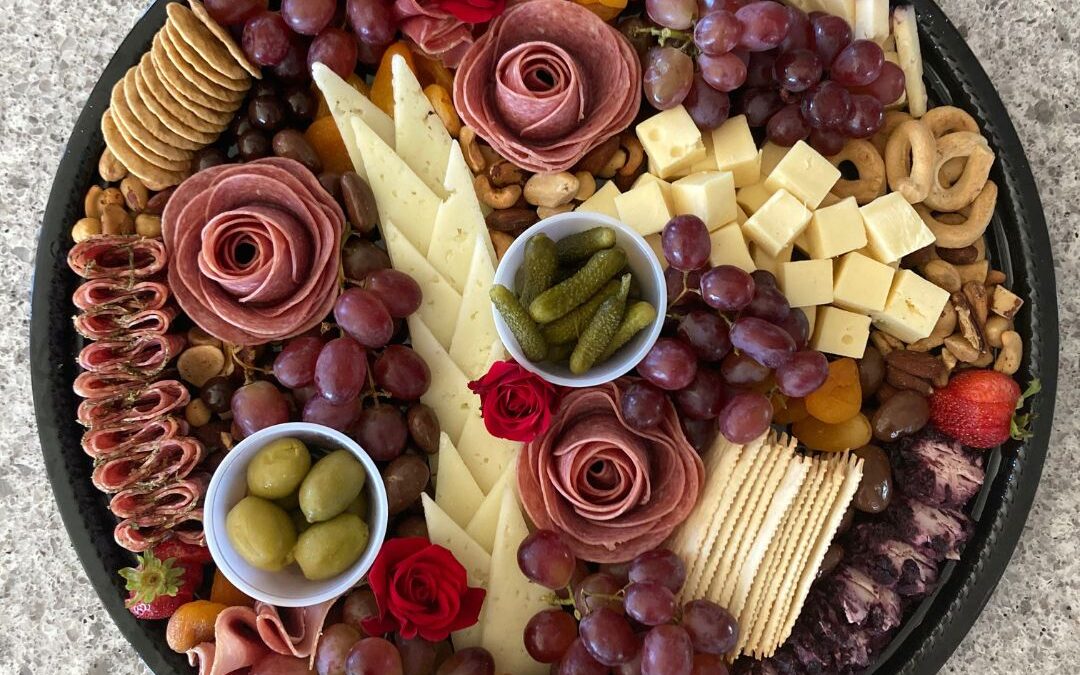Every so often, I get asked the question, “What the heck is charcuterie???” To which I reply, “Well, it’s basically a Lunchable for grownups, albeit a fancy one.” And while that is an apt description of what charcuterie boards have become for us here in the States, it’s actually not how it started. Or what you’ll get in its country of origin.
Charcuterie is a French term (surprise) that basically means cured meat. Salami, pepperoni, sausages, bacon, etc.
You can imagine how surprised I was when I ordered a charcuterie board in Europe and got … a plate full of meat.
In Italy, it’s called Tagliere, and you can get the plate with just meat, or you can get a mixed one with cheese (same goes in France). They just focus on Italian meats and cheeses.
This is not to be confused with a cheese board where you get an assortment of … cheeses.
Crazy, I know.
Although, now I’m having a flashback to that delicious cheese board I had at the farm in Tuscany and I suddenly have a hankering for Pecorino.
I digress.
Since you are likely not in Europe at the moment, and will probably be having a charcuterie board in the good ol’ U.S. of A., here’s what to expect on a charcuterie board:
- Charcuterie AKA cured meats. Salami and prosciutto are super popular options, with salami roses being a fun and easy way to make them feel more fancy.
- Cheese. Depending on the size of the board, you could have anywhere from 1-5+ types of cheeses. It’s usually a mix of hard and semi-soft or soft cheese. Brie with a shape cut out and filled with honey or jam is pretty trendy right now.
- Grapes. A staple on every board I make because they are just so good and pair so well with cheese.
- Dried fruit. I’m partial to apricots, but you may see apples, figs, or even cranberries if it’s a more seasonal board.
- Nuts. Marcona almonds are having a moment right now. I love those and mixed nuts. If you’re ordering or making a board and are concerned about food allergies, you can always put the nuts in a small container so they don’t touch everything else.
- Pickled goods. Olives are pretty standard, but pickles are also an option, as are things like pickled asparagus and peppers.
- Crackers. Depending on the board, these might be on the board itself or served on the side. If you know people with gluten intolerances/allergies will be partaking, putting the crackers on the side is a great option, with a container of gluten-free crackers. Rice crackers and Milton’s gluten-free crackers are my favorite GF options (as someone who can’t handle gluten).
- Fillers/extras. These are things that can get tucked in around all the other stuff. Things like seasonal berries, chocolates, small jars of jam or honey, etc.
- Garnishes. Often, the board is pretty enough on its own that you don’t need to add any garnishes unless you’re really feeling it or it’s for a special occasion and you want an extra touch. Think herbs or fresh flowers. Or things like plastic hearts or skulls for seasonal stuff.
Charcuterie boards make great appetizers at events and the beautiful thing about them is they can be as big or as small as you want. We even make a lot of charcuterie cups for events because they’re easy for people to grab and munch on while they mill about.
If you need a charcuterie board or tray (or cups!) for an event, check out our menu here. And if you need something more customized, feel free to ask!
Want to learn how to make your own charcuterie boards (or uplevel your current skills)? Check out our DIY Charcuterie Classes to see what’s coming up.

